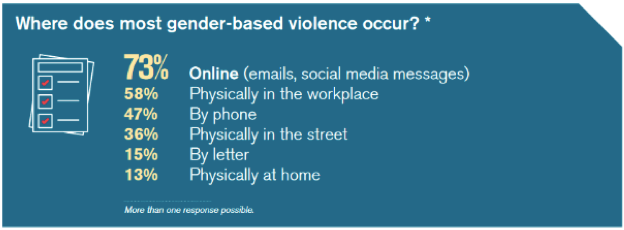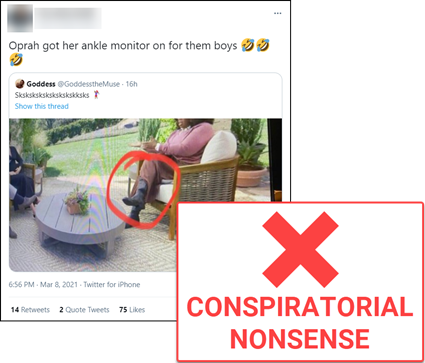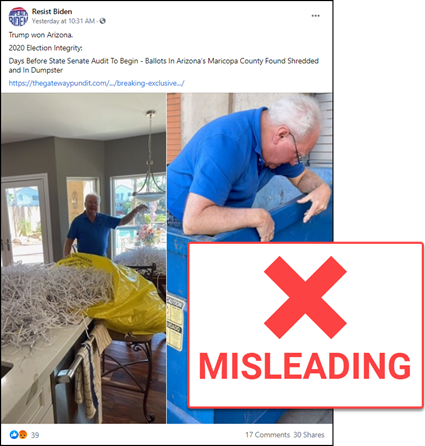GSAN: Sexism in journalism | Stimulus bill misinfo | Iowa reporter cleared
Subscribe to our free weekly newsletter for the general public Get Smart About News.
|
|
Learn about news literacy this week |
|
Sexism in journalism Women working as journalists increasingly face gender-based violence outside of their newsrooms, including a barrage of threats and hate online. But they also endure it inside their workplaces, from discrimination to sexual assaults and harassment, according to a new Reporters Without Borders (RSF) report detailing the toll sexism has taken on journalism.  Published on March 8 — International Women’s Day — the report includes RSF’s analysis of 112 responses to questionnaires sent to its global correspondents and journalists who cover gender, and collected between July and October 2020.
|
|
Viral rumor rundown  NO: The fourth “phase” of the Keystone pipeline project — called Keystone XL — was not “just about completed” nor was it “paid for” when President Joe Biden canceled it in January. YES: The first three phases of the Keystone Pipeline System — connecting Alberta, Canada, to Port Arthur, Texas — were completed by 2014. YES: The controversial Keystone XL pipeline project was blocked by former President Barack Obama, then later approved by former President Donald Trump, and blocked again by President Joe Biden in January. YES: About 94 miles of the 1,210 miles of the planned XL pipeline — or about 8% — had been built and a fraction of the estimated $8 billion cost had been pledged when Biden revoked the project’s permit.  NO: The medical worker in this video did not fake giving actor Anthony Hopkins a COVID-19 vaccination and instead squirt the vaccine onto the ground. YES: The worker was expelling excess vaccine occupying the “dead space” in the syringe, which is a standard part of administering injections of any medication. YES: A spokesperson for CHA Hollywood Presbyterian Medical Center confirmed Hopkins received a full dose at a Los Angeles drive-thru vaccination point. NO: This Instagram account is not an official account of the Republican party, despite its name.  NO: Oprah Winfrey was not wearing an ankle monitor under her boots during her March 7 interview with Meghan Markle and Prince Harry, the Duchess and Duke of Sussex. YES: This is a narrative fragment of the QAnon mass conspiratorial delusion, which contends that many public figures, including Winfrey, are part of a Satanic cabal of cannibalistic pedophiles, many of whom are secretly under house arrest.
 NO: Shredded and destroyed ballots containing votes from the 2020 presidential election were not found in a dumpster in Maricopa County, Arizona, prior to the start of a state Senate audit of election results. YES: The Maricopa County Elections Department confirmed to Lead Stories that by law voted ballots are kept for a 24-month retention period. YES: County election officials said “the 2.1 million voted ballots from the November General Election are safe and accounted for in a vault, under 24/7 surveillance.” YES: The ballots in the photo could be discarded sample ballots or unused mail-in ballots, according to the county. NO: Former President Donald Trump did not win the state of Arizona in 2020, as this Facebook post also claims.
|
|
★ NewsLit Picks Featured
In a win for press freedom, a jury in Iowa acquitted Des Moines Register reporter Andrea Sahouri, who was pepper-sprayed and arrested in May as she covered a Black Lives Matter protest. After a three-day trial, during which she testified that she identified herself to police as a journalist and said, “‘I put up my hands and said ‘I’m press, I’m press,’” Sahouri was found not guilty on March 10 of two misdemeanor charges (failure to disperse and interference with official acts). Sahouri described the jury’s decision as upholding “‘democracy, a just democracy, the freedom of the press, First Amendment rights, the list goes on.’”
Quick Picks
|
|
Thanks for reading! Your weekly issue of Get Smart About News is created by Peter Adams (@PeterD_Adams), Suzannah Gonzales and Hannah Covington (@HannahCov) of the News Literacy Project. It is edited by NLP’s Mary Kane (@marykkane). |
|

